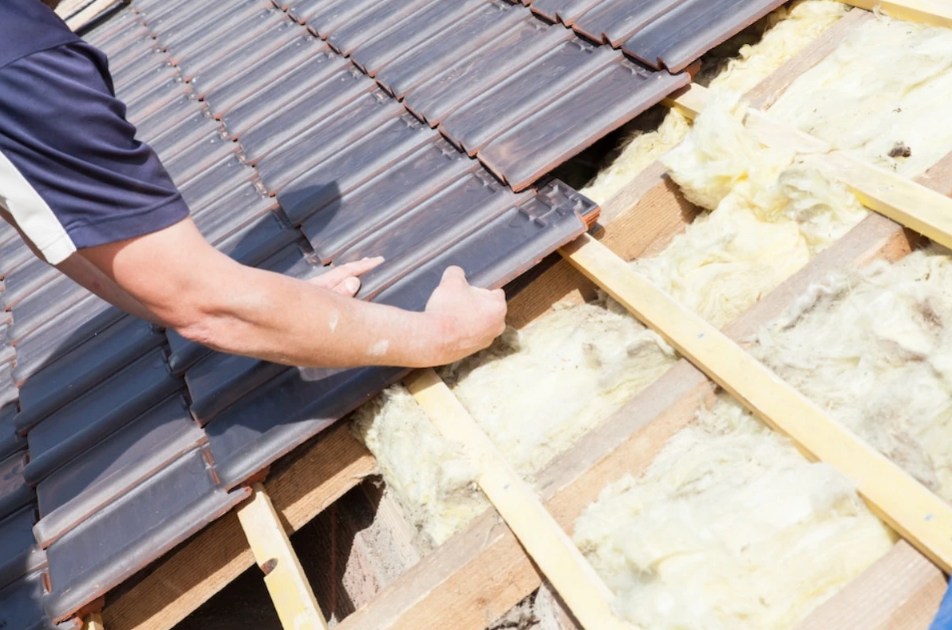Your home’s comfort and energy efficiency depends largely on the performance of your roof, but it’s an addition that’s often overlooked to do list in the home improvement process. Did you know that 25% of heat escapes from a building through an non-insulated roof? You’ll save energy and get plenty of other benefits by increasing the insulation under your roof.
Thank you for reading this post, don't forget to subscribe!In this blog, we are going to consider the roof insulation and its significance, describe the advantages of it, consider various insulation materials and offer some advice on its choice, installation and care. At the end, you should have everything you need to make wise choices for your home or business.
What is Roof Insulation?
Roof insulation is a form of barrier that can keep your home warm in winter and cool in summer. It’s mounted in the roof framing and keeps heat from escaping in the winter and entering in the summer. Roof insulation: a more comfortable, energy-efficient home It is not only comfort that is improved when insulating a roof.
Whether you’re constructing a new house or renovating an existing one, the more you know about roof insulation, the more you can do to minimize your energy bills and cut your greenhouse gas emissions.
Benefits of Roof Insulation
Save Energy and Reduce Bills
Energy efficiency is the single greatest benefit of roof insulation. This lessens heat loss in the winter and heat gain in the summer, so your HVAC doesn’t have to work as hard to keep your space comfortable temperature. This results in substantial savings off your energy bills and the investment in insulation can often pay for itself in a relatively short amount of time.
Reduce Carbon Footprint
Using less energy also means emitting less of the planet-warming greenhouse gases. Roof insulation is good for the environment and fits in well with the world today. A lot of insulation materials are also manufactured using recycled or renewable materials, also cutting down on environmental harm.
Enhanced Comfort
Protect your roof structure against extreme temperatures with roof insulation – it helps keep living and working spaces comfortable throughout the year. There’d be no more freezing winters or scorching summers!
Noise Reduction
Great insulation serves as a sound insulator. If you live in an loud environment or close to a busy street, roof insulation will help you block outdoor sound, which can make your home more quiet and comfort.
Property Value
An insulated roof adds value to your home. Prospective buyers view it as a selling feature that saves money and adds comfort. And many home energy certifications also favor homes with strong insulation solutions.
So knowing the pros, here’s a look at the various types of roof insulation.
Roof Insulation Options
There are a variety of options when it comes to choosing roof insulation. This is a list of the most used materials:
- Fiberglass Insulation
- Highlights: Universally popular and inexpensive.
- Applications: Perfect for attic and flat roofs.
- Pros: Fire-resistant and durable.
- Notes: Wear protective materials during installation to prevent irritation.
Spray Foam Insulation
- Strongly Expanding design for good Coverage: Expands to fill voids.
- Uses: Great for odd shaped openings and around corners.
- Pros: Excellent our sealing and moisture resistance.
- Notes: More costly than other models, but higher performance is provided.
Rigid Foam Boards
- Features: Solid polystyrene or polyurethane panels.
- Applications: Can be used for both pitched and flat roof.
- Pros: High R-value and can be used in a variety of applications.
- Notes: For best fit, must be cut to fit.
Cellulose Insulation
- Features: Constructed of recycled paper product treated for fire resistance.
- Applications: Used mainly in incomplete attics.
- Pros: Environmentally friendly and cheap.
- Notes: Will solidify over time, becoming less effective if installed improperly.
Natural Wool or Cotton
- Highlights: Sustainable materials such as sheep wool or recycled denim.
- Uses: Ideal for green home projects.
- Pros: Absorbs moisture without compromising the insulation.
- Notes: More expensive than synthetic.

How to Select the Right Insulation for Your Roof
The right insulation depends on various factors:
Consider Your Climate
In addition, unless you are building a home in a cold climate where you need to prevent heat loss, R-value is something that needs to be given a high priority, while heat-resistance capacity tends to be most significant in the hotter parts.
Check Your Roof Type
Various materials are best provided for different roof constructions. For instance, fiberglass batts are great for pitched roofs, while spray foam excels in spaces that have odd nooks and crannies.
Assess Your Budget
Some materials, such as rigid foam and spray foam, have more of an up-front cost but may end up saving you money in the long run.
Factor in Longevity
Durability is key. Look at the longevity of the insulation material and its capability to maintain consistent Rvalue over time -no settling or decompression.
Consult Professionals
If you are unsure, consult a roofing or insulation professional to inspect your home. They can suggest the best choices for you.
DIY or Professional Installation
DIY
For those who are handy, certain materials—like fiberglass batts—can also be installed as a DIY project and can offer some significant savings. But if you have no experience, you are likely to encounter typical problems such as gaps, or they do not seal properly, which diminishes effectiveness.
Professional Installation
When professionals are hired, you can rest assured that the insulation is properly put in place. They have expertise, specialized equipment, and often offer warranties, all of which provides peace of mind. While it will cost you more upfront, professional installation typically leads to improved performance and savings over time.
Roof Insulation Costs
Roof insulation prices will depend on a number of factors, such as the type of material, whether it’s simple for you to install), or how large the roof is that you’re insulating.
- Fiberglass Insulation: $0.40-$0.50 per square foot.
- Spray Foam Insulation: $1.50-$3.00 per sq.ft.
- Firby Insulation Prices Open Cell Foam: $0.50-$0.75 per board foot.closed cell foam Cost will be determined by R-value selected. R-VALUED Insulation: About $0.70 per square foot. Sheeting prices vary. Rigid Foam Boards: $1.00-$2.00 per square foot.
In many cases, those initial costs tend to be offset by the cost savings associated with reduced energy bills in the next 2 to 5 years.
Common Mistakes to Avoid
Bypassing pre-installation sealer:Insulation does no good if air can escape your home. Fill in gaps and cracks prior to installing insulation.
Choosing the Wrong Thickness
R-values matter. Be sure the insulation you choose satisfies the R-value recommended for your area.
Ignoring Professional Advice
Dismissing the advice of pros can result in bad material decisions and poorly done installations.
Neglecting Maintenance
Insulation should be checked periodically to retain its effectiveness. Fail to maintain may cause the performance of your Uee size to decrease over time.
The Future of Roof Insulation
With emergent technology and environmental awareness, it appears the future of roof insulation is looking up. Intelligent insulation combined with IoT devices are being developed to monitor energy performance in real-time. Environmentally friendly insulation, such as recyclable/renewable and bio-based insulation materials, is also becoming more prominent, providing environmentally friendly options for the eco-conscious end user.
For right now, the simple act of investing in top-quality roof insulation can do wonders for the energy efficiency, comfort, and dollar value of your home.



